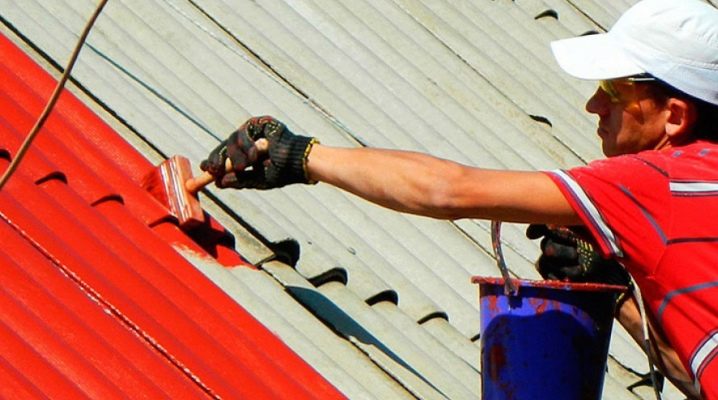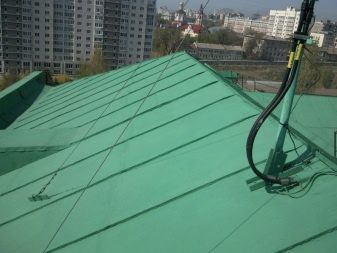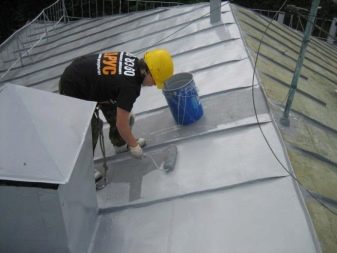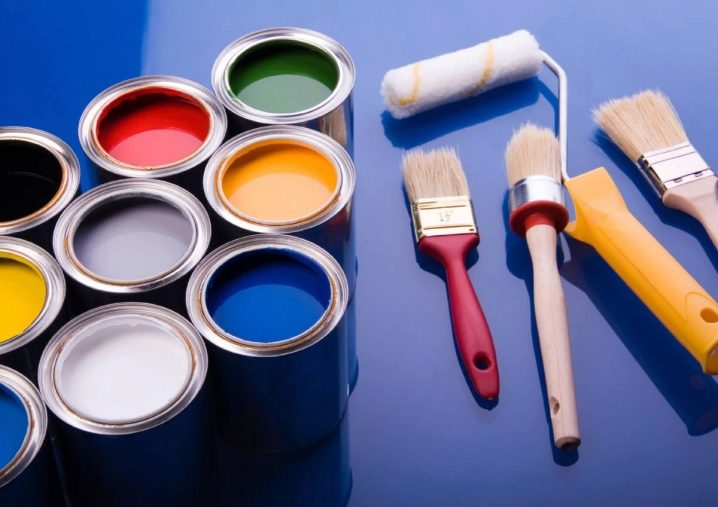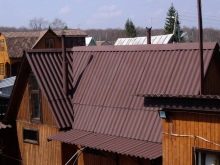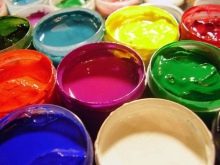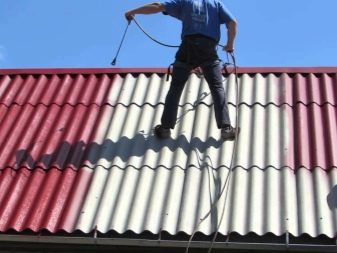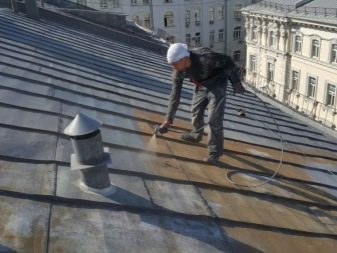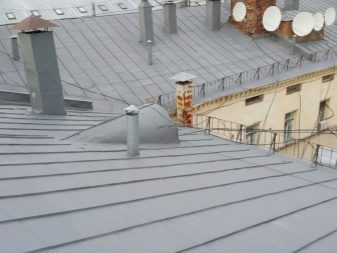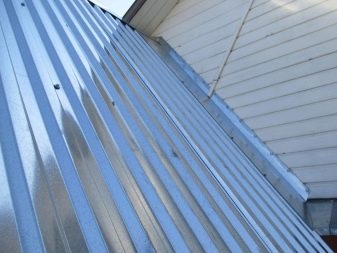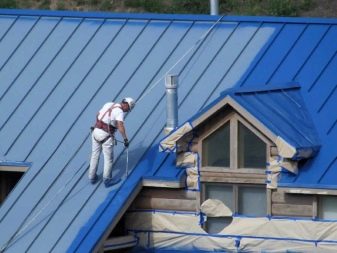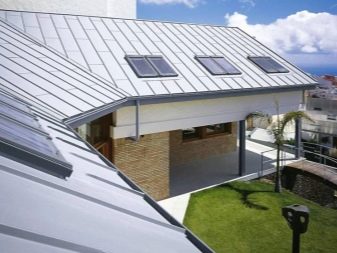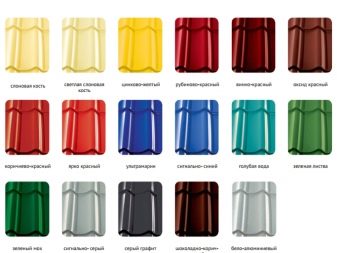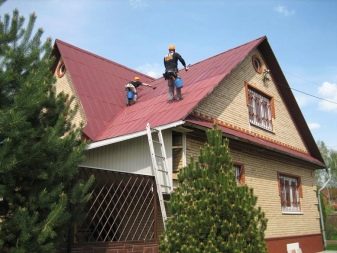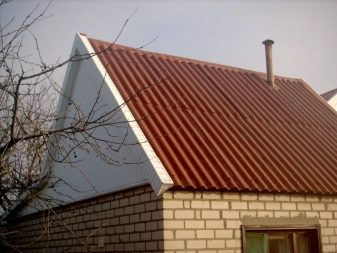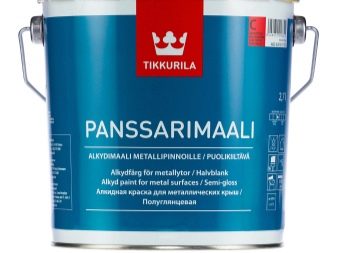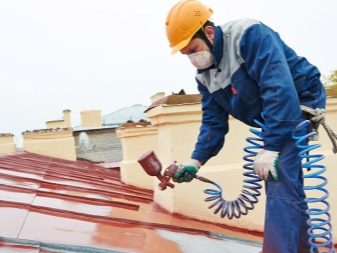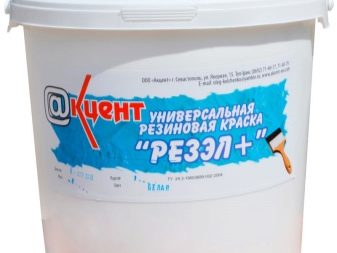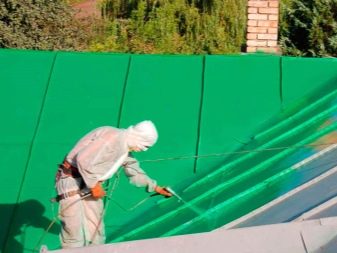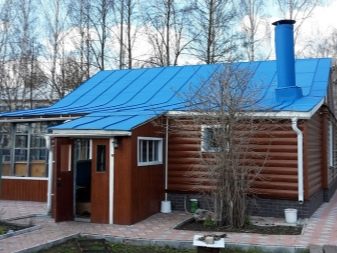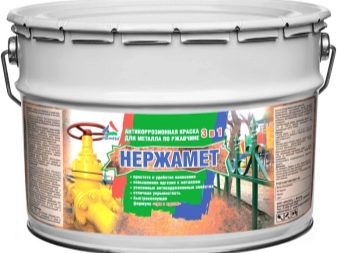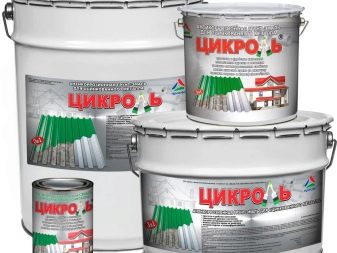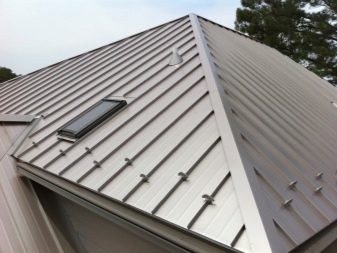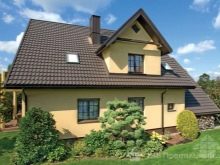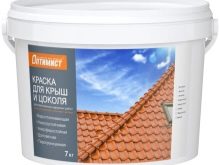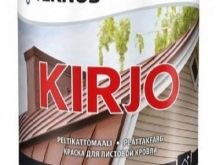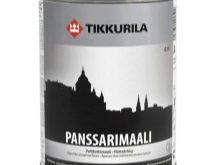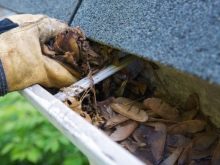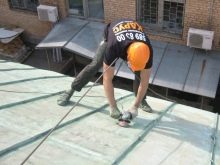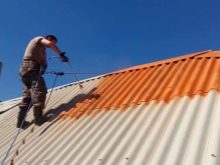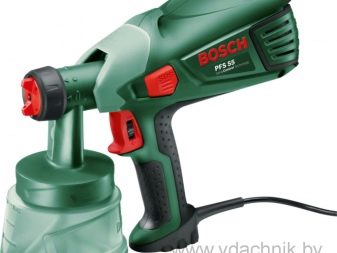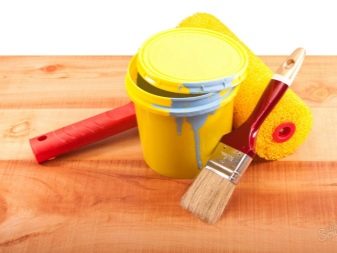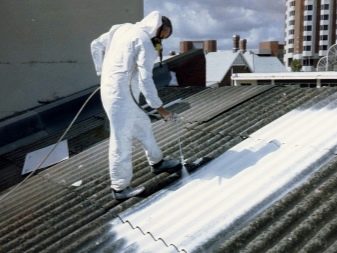Painting the roof: the rules for choosing and applying paint
Painting the roof requires a special approach both in the work and in the selection of paints and varnishes. To select the most suitable option of roofing paint, you need to understand the many nuances.
Special features
Painting of the roof of the house is always, regardless of what material is made of the roof. This may be due not only to the desire to update the design of the facade, but also to protect the coating from all sorts of atmospheric phenomena and adverse factors, including:
- ultraviolet radiation;
- precipitation;
- wind and snow loads;
- exposure to microorganisms and many others.
The choice of paint in this case becomes a matter of paramount importance, because the strength of the coating depends on how well the selection is made, and how long the roofing material will last.
It is better to prepare for the purchase in advance than to bite your elbows, trusting the seller-consultant and buying the wrong paintwork composition.
Requirements
For paints for roofing presented a list of specific requirements.
- Resistance to atmospheric and other adverse factors. These include not only the effects of precipitation or prolonged exposure to sunlight, but also temperature drops. It is important that the paint has sufficient elasticity, because a number of roofs (for example, metal) expand when heated, and the paint should expand with them.
- A variety of colors. This is especially important in cases where it is necessary to paint the roof of the house with an unusual design of the facade. In these situations, classic brown, green and dark gray are not enough. You may need an interesting color solution: yellow, pink, purple.
- Attractive appearance. Paint should not go bald spots. The color should be uniform, not fade and not lose the original saturation over time.
Roof material
Depending on the material from which the roof is made, the type of paint is selected.Even the highest quality paintwork material will not fall properly if it does not fit the roof finish.
So, all coatings can be divided into two large groups: slate and metal. If a uniform dye is suitable for slate ones, the paint for metals is selected depending on the type.
Slate
Slate roofs are especially common in old Soviet-built houses. It is an inexpensive, durable and at the same time fragile material that is susceptible to infection by various microorganisms - mosses and lichens. This must be taken into account when choosing a dye: it is important that it properly seals the pores of the material, preventing live organisms from multiplying on the roof surface.
Slate practically does not expand when heated, and the elasticity of the paint is not the main thing. It is much more important that it has good adhesion and is suitable for working with slate roofs.
In fact, practically any paintwork material that is used for roofing works will be suitable for painting slate.
Black metal
Working with ferrous metal is much more difficult than with slate. This is due to the fact that this material reacts strongly to temperature extremes, and is also subject to corrosive changes.It is important to pay attention to the fact that the paint for ferrous metal should be moisture-resistant, preferably with anti-corrosion additives, especially if rust spots are already visible in some places. Here, elasticity is an important factor, so that the paint layer does not crack when the roof is heated.
Additionally, it will be necessary to purchase a primer designed for metals, since if the roof is not properly primed, there is a risk that the paint will later exfoliate and the general appearance will become unattractive.
Galvanized metal
A positive factor when working with galvanized metals is that they do not have to be primed. The primer is needed only in places where corrosive processes have begun. However, it should be borne in mind that by itself, the galvanized coating has poor adhesive qualities, and unsuitable paint will not stick. It is important that it has an increased adhesion and elasticity. Only then the coating will turn out really high quality.
An important point is pre-cleaning. Since galvanized steel is smooth, there is so little on it, so if you leave dusty or polluted places, the paint will come down there first.
Non-ferrous metals
Roofs made from non-ferrous metals, such as copper, titanium or zinc, are less common. This is due to their high cost. Consequently, there are not too many colors for such options. It is important to pay attention to such factors as lack of electrical conductivity, good elasticity, adhesion, resistance to mechanical damage. As a rule, non-ferrous metals do not corrode; therefore, it is not necessary to take an anti-corrosion composition, but it is best if the paint is moisture-proof.
Certain types of paint are suitable for each roof variant. Although many of them turn out to be expensive, remember that buying paint and painting the surface protects you from quickly replacing the entire canvas, which will cost much more.
Kinds
In order to paint the roof, not every paintwork composition is suitable. Some of them are universal and are used not only for roofing, others are exclusively for painting roofs. High-quality universal compounds are not inferior to specialized brands, but only specific designs are suitable for working with some of the types of roofs.
There are a lot of colors: alkyd, epoxy and many others, but only some of them are used more often than others in self-painting. To consider products that only professional builders use does not make sense, since working with them requires special knowledge and skills.
Oily
Oil paints for roofs initially cover metal variants in order to secure sheets during transportation, laying and for the first time of operation. In the future, many people choose oil paints because of their cheapness, but in reality things are not so simple. Despite the apparent savings, oil options are not able to adequately protect the draft roof covering from atmospheric agents. The elasticity is almost zero, which is why the painted layer quickly cracks, and the roof has to be repainted every 3-5 years.
As you can see, the savings are rather dubious, both in terms of finances and in terms of time.
Acrylic
These varieties are considered among the best. They have ideal performance that should be present in roofing paint materials: excellent elasticity, UV resistance, high adhesion characteristics.Acrylic versions can be used for painting slate roofs and metal. Depending on the addition of various additives, the properties of the paints can also be changed.
The disadvantage can be identified only one - the high cost. Indeed, in the modern market acrylic paints are one of the most expensive.
However, when recalculating, the price does not seem so impressive, because the coating can last up to 25 years without losing its original properties.
Anti-corrosion
These are the same acrylic, but with the addition of special additives that prevent rust from forming. As a rule, anti-corrosion options can not be applied to the affected areas - there will be no sense. It is best to treat metal sheets with them immediately after installation before the first rain, in order to protect the roof surface as much as possible.
Anti-corrosion paints are quite expensive, so it does not make sense to buy them for slate roofs, because they are not subject to corrosion.
The best thing is to treat the roof of ferrous metal with anti-corrosion paint. So the tin or other variety will be reliably protected, and you can save on the further replacement of the affected sheets.
Rubber
The latest development are rubber dyes, also related to the acrylic group. They are suitable for both slate and metals.
In addition to a large selection of colors, rubber paints have a number of positive properties:
- they are heat resistant;
- perfectly repel water;
- differ in the increased adhesion;
- do not burn out under the influence of an ultraviolet;
- have anti-corrosion properties;
- can be used for a long time;
- withstand significant temperature drops, since they have a high elasticity;
- easy to work;
- do not have a sharp toxic smell;
- resistant to mechanical damage;
- do not allow microorganisms to develop.
Thus, rubber paints are the only universal option suitable for painting any roof.
By rust
These paints are a subtype of anti-corrosion, only they are suitable for painting surfaces that have already undergone corrosion. Of course, it will be necessary to prepare the surface in advance, but it will not be necessary to completely get rid of rust. The paint contains special additives that seal the existing corrosive stains and prevent them from spreading to the “healthy” metal.
Paints for rust will be suitable in cases where you tightened with a preventive staining just installed the roof, and on it appeared a little rusty tags.
Strongly affected sheets of metal is better not to handle. The best solution would be to completely replace them with immediate staining.
For galvanized roofs
Galvanized steel has its own characteristics, with the result that it needs special paint. The best solution is to choose those varieties that are appropriately labeled as suitable for painting roofs from such material. If there is no suitable paint, a rubber one will do.
Remember that before painting a galvanized roof will need to be well prepared, especially if you choose a non-specialized paint. This will ensure the best fit of the rubber dye to the surface, and also allow it to retain all of its stated properties.
Design and color
Roof paints are available in various colors. With their help, you can complement the facades of different styles of design traditional (country, classic), ethnic (Mediterranean or ecological styles) or modern (hi-tech,modern) focus.
The most popular among buyers are several colors.
- White. Choose for modern laconic exterior styles: modern, hi-tech, minimalism.
- Brown. All gamma from milky-beige to saturated color of dark chocolate is used. For any style.
- Reddish orange. Most often chosen for the Mediterranean stylistic trends. The roof must be figured.
- Green. Looks great with houses of different styles, whether eco or gothic.
Manufacturers
Companies such as "KrasKo", Tikkurila, Teknos, "Optimist", Rust-Oleum. Compositions from these manufacturers have shown high strength and reliability even in extremely unfavorable environments. Distinguishes these paints and high cost, except for products of domestic producer "Optimist".
Roof preparation
Before you start applying the selected paint, you must properly prepare the surface.
To do this, you need to follow a few steps:
- All rubbish is removed from the roof (fallen leaves, for example). The surface is cleaned from visible dirt and stains.
- Rust rubbed with a metal brush.
- Roofing is done: close up the cracks, eliminate defects.
- The surface is washed with water, after which it is completely dried.
- In the presence of strong rust stains, the roof is inspected from the inside in these places. If rust is only outside, it is treated with anti-corrosion compounds. If corrosion has struck the inside, it is better to completely replace the metal sheet with a new one.
- Priming is done.
What and how to apply?
For applying roofing paints are used standard methods:
- wide brush;
- roller;
- spray.
It should be noted that the most uniform color can be achieved by spraying. So it will be possible to control the thickness of the applied layer, adding a little bit of color where it is really needed.
Before painting it is necessary to thoroughly mix the composition to avoid its separation. Paint is applied in several layers. Before applying each new layer, you must wait until the previous one dries out. Full drying time or paint application interval is usually indicated by the manufacturer on the packaging.
Please note that it is best to carry out all paint work at a positive air temperature of 10-25 degrees.
How to paint a roof of the house, look in the following video.
